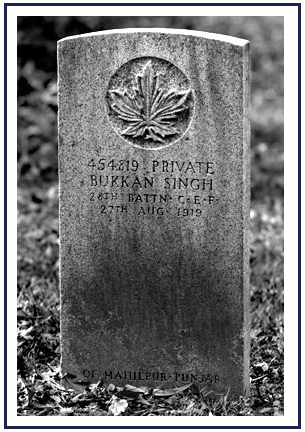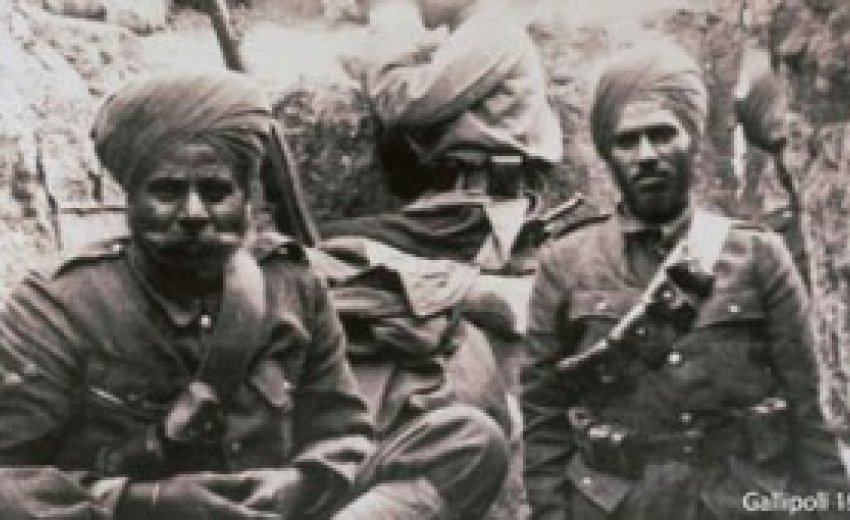Indian Sikhs today account for nearly 1.4 per cent of the total population of Canada, the Gur Sikh Temple in Abbotsford has been accorded the status of a National Historic Site and Punjabi is being considered as the third official language of the country. However, little was known, till recently, about the earliest Indian Sikh immigrants to Canada.
That was till an independent Canadian researcher, David R Gray, delved deeper into his interest in the Sikh community, discovered records of Indian Sikhs who served in the Canadian military in World War I (1914-1918) and made a documentary on it. The much-awarded film Canadian Soldier Sikhs: A Little Story in a Big War – was screened at the India Habitat Centre recently and brought into public domain many interesting facets of this history.
While searching for information on a group of Sikhs who came to Canada in 1906 -1907 to work in a limestone quarry, David discovered that eight Sikhs, all with the surname Singh, had enlisted in the Canadian army to fight in the First World War. This was curious as Sikh immigrants to Canada then were neither given citizenship, the right to vote nor bring over their families. The immigrant soldiers did not seem to have had much reason to fight for an alien nation without any assurance that they will even be allowed to stay on.
Canadian historians say that that was the time for nation-building when residents, irrespective of their Chinese, Japanese or Indian origin, came together to serve the country. However, it must have been particularly difficult for the Indian Sikhs owing to their distinct religious and cultural background. In the military records of WWI, most of these Sikh soldiers have claimed allegiance to the Church of England while some others have written ‘The Sikh Temple at 2nd Avenue, Vancouver’ against their religious denomination.
 Even though, the Sikhs, unshorn hair, beard and turban were accommodated in the British-Indian army fighting in WWI those days, no such allowance was made for Sikh soldiers in the Canadian army. This meant that the immigrants had to forgo their religious identity too. Yet, the eight brave men sailed to the battlefronts in France and Belgium along with thousands of other Canadian soldiers to war with the German troops.
Even though, the Sikhs, unshorn hair, beard and turban were accommodated in the British-Indian army fighting in WWI those days, no such allowance was made for Sikh soldiers in the Canadian army. This meant that the immigrants had to forgo their religious identity too. Yet, the eight brave men sailed to the battlefronts in France and Belgium along with thousands of other Canadian soldiers to war with the German troops.
Three of them were killed, three others grievously injured and records of only two – John Singh and Sewa Singh - were traced back to Canada after wartime. These men did not go back to India, never saw their families again and also, did not remarry.
Almost 90 years after the death of the bravehearts, their graves and even a victory medal have been discovered. Indian army historian Sandeep Singh Brar recovered the war medal given to Buckam Singh, in 2008, which also led him to his tombstone in Kitchener, East of Canada. It is the only grave of the eight Indian Sikh soldiers to be located in the country, others being spread across the battlegrounds of France. Brar is featured in the film.
Buckam Singh is now the newfound hero of the Indo-Canadian Sikh community. A day has been dedicated to observe the sacrifices of Buckam and his comrades, called the Annual Sikh Remembrance Day. As David says, “Canadian Soldier Sikhs recounts the making of a nation, not just through the service of her own sons, but some completely unrelated and unknown.”
---------------------------------
Related Articles:http://www.sikhnet.com/news/surreys-largest-sikh-temple-honour-canadian-soldiers
http://www.sikhnet.com/news/102-year-old-sikh-veteran-remembers
http://www.sikhnet.com/news/khanda-arlington-national-cemetery
http://www.sikhnet.com/news/sikh-community-honours-once-forgotten-hero
http://www.sikhnet.com/news/film-reveals-canadian-sikh-communitys-world-war-i-stories
http://www.sikhnet.com/news/reclaiming-forgotten-hero-pvt-buckam-singh
